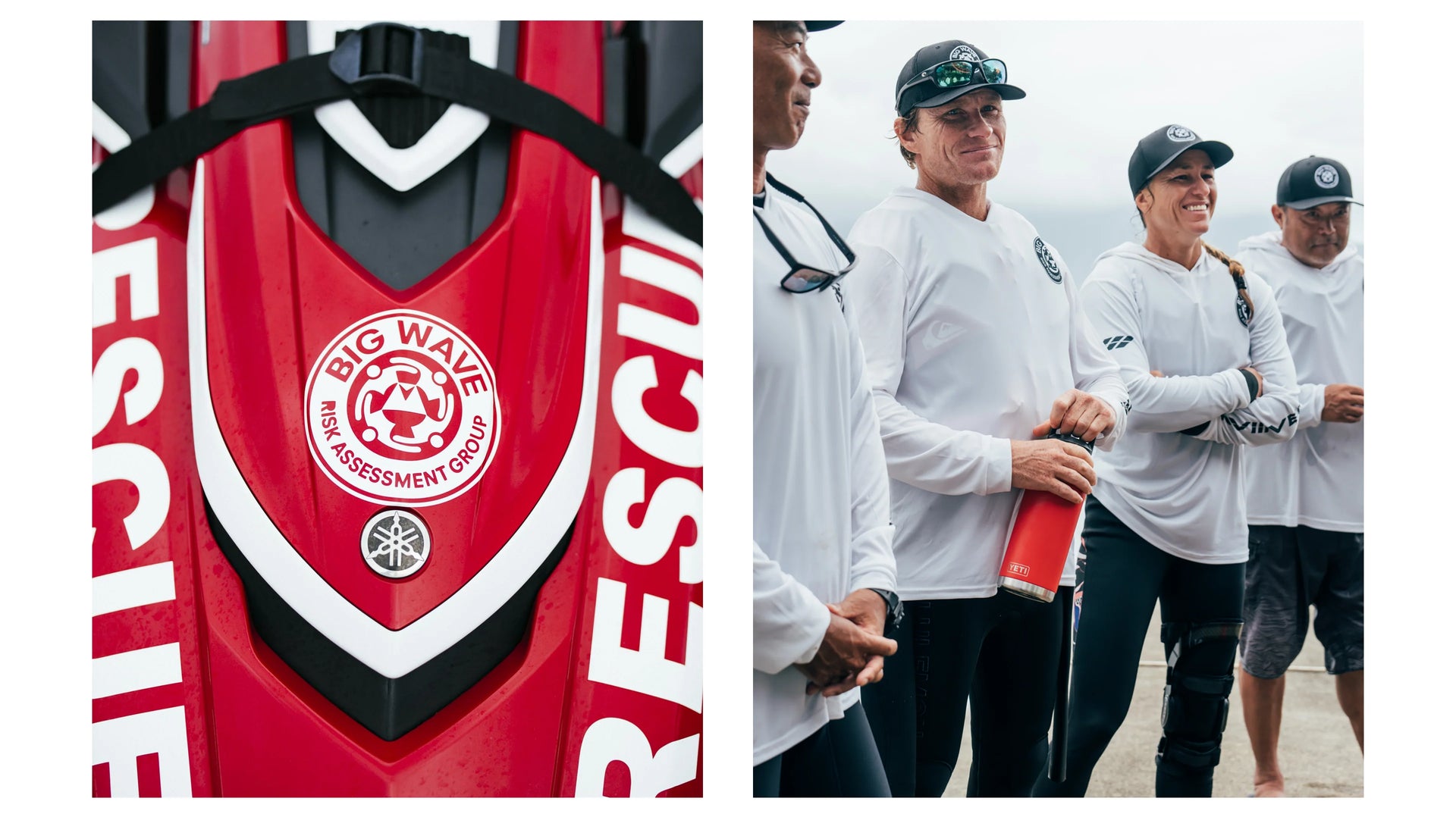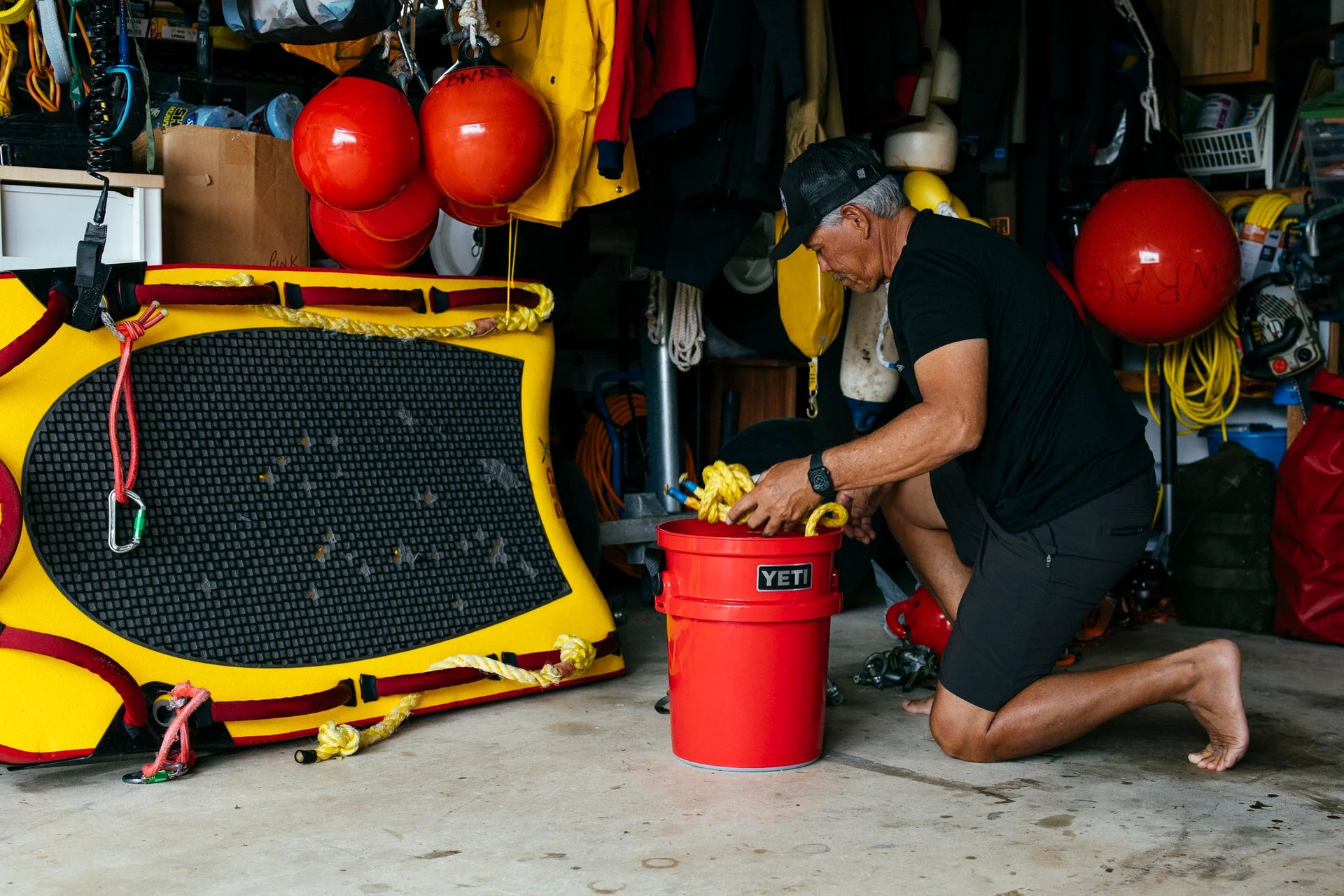COASTAL
7 SECONDS TO
MAKE THE SAVE
Renowned charger and Big Wave Risk Assessment Group instructor Mark Healey takes us through the evolution of safety within the world of big wave surfing.
As a big wave surfer, I’ve been chasing swells to some of the most remote parts of the world for years. Because of the isolated nature of these places and the niche skills required to be in big wave conditions, the people in the water are often our own first responders. Surfing 30+ foot waves is dangerous enough. But without preparation and cooperation, it’s easily deadly.
After the passing of a fellow big wave surfer and really close friend, Sion Milosky, we all knew we needed something to change. A group of us watermen and women got together to figure out how to codify ways of making something that’s inherently risky as safe as possible. And the Big Wave Risk Assessment Group — BWRAG for short — was born.

LEFT: BWRAG was established in 2014 with the goal of addressing the lack of risk management and education within big wave lineups around the globe. Image: Jeremy Koreski
RIGHT: Ambassador Mark Healey prepares for a day of MRV training with fellow BWRAG instructors. Image: Nick Kelley
"We’re not divided by land, but connected by water.”
Brian Keaulana,
Chief Master Instructor at BWRAG
Ten years in, we now instruct and train all over the world, working to change the way that big wave lineups operate. It’s a safe bet that at any given time, at least half of the people in the lineup have done a BWRAG course. BWRAG takes on this selfish, glory-driven sport, demands that competitors drop their egos, and asks everyone to work together. Because the same person you’ve been avoiding in the lineup could end up being the one saving your life.
THE JET SKI FACTOR
There are about seven to eighteen seconds between waves in a set — the only window for a save. With their speed and maneuverability, jet skis have become one of the best Marine Rescue Vehicles (MRVs) in these conditions. Rescuers head into the impact zone and pick up people that are in distress or simply want to get the hell out of there. Just getting someone onto a jet ski sled requires skill, strength, and training, not to mention the jet ski handling skills it takes to perform a proper exit strategy before the next 30 foot wave hits. This is why BWRAG puts so much time and effort into jet ski courses.
"There are a lot of people who wouldn’t be alive if it weren’t for water rescue teams, myself included."
Mark Healey,
Ambassador & Big Wave Surfer

ABOVE: BWRAG courses instruct elite big wave athletes on how to assess their own personal risk as well as how to be an asset to others in an emergency situation.
Becoming Risk Technicians
More often than not, most rescuers are also surfers. So quite a bit of BWRAG training focuses on what it means to be a rescuer as well as an active rider.
The BWRAG rule of thumb for big wave safety is to take stock of how someone measures up in those conditions using KAT: Knowledge, Abilities, and Technology. When heading out into big wave territory, knowledge of the surf breaks, rip currents, red, orange, and green zones, and how conditions will progress throughout the day is paramount to surviving these beasts.
The next thing to measure before heading into the water is a person’s physical ability: their strength as a swimmer, their ability to keep calm under duress, and if they know when to go full boar and when to hang back. The last to note before paddling out is technology. Double check that any PFDs (personal flotation devices) are in working condition, square off with ski operators, and make sure that an emergency kit is prepped and readily available. See how Mark Healey stays prepared to take on 30+ foot waves.

ABOVE: Master Instructor Pat Chong Tim sorts his jet ski equipment prior to a day teaching at a BWRAG MRV training.
“Safety just doesn't exist unless we create it. So that's what we do here. We get to create that safety.”
Pat Chong Tim,
Chief Master Instructor with BWRAG
BWRAG’s mission is to share collective knowledge of ocean safety and risk management with the international ocean community. Advance your education and awareness with BWRAG’s in-person training or online courses.
- Choosing a selection results in a full page refresh.